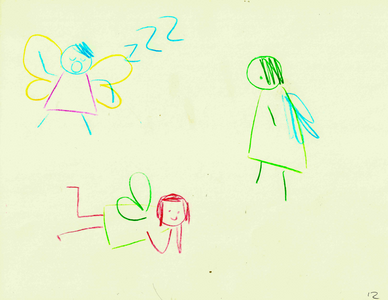What Cartoons and Comics Mean to Me Within the World of High Art – by Kaitlyn McCafferty
- Art Ducko

- Feb 1, 2018
- 3 min read
Updated: May 8, 2019

The situation of a cartoon or comic academic is an odd one. When I’ve told people that I’m minoring in comics and cartoon studies, I’ve received many a skeptical reply. Within the art world in particular, cartoons and comics aren’t necessarily esteemed mediums. It’s very uncommon for comics, cartoons, and high art to exist within the same mental and physical space. Perhaps, however, this is a defining characteristic for comics and cartoons, as well as a primary reason why they are so valuable.
Studying art at university, I’m often encountered with the question, “who decides what art is?” On one hand, the answer is: everyone. On the other hand, the answer is: rich people. The upper class, throughout history, with money, sponsoring, and commissions., has dictated what is and what is not “high art.”

This “high art” was completely lost to me up until last year, when I started going to college. I grew up in a small town, going to small schools. I was not exposed to very much art growing up. My interest in art originated with comics and cartoons; my love of Pucca, X Men, Fruits Basket, Justice League, Avatar: The Last Airbender, and Young Justice spurred me to practice drawing. I now feel comics and cartoons play this fundamental part in all of my works, influencing the way I approach art in general.
I find one reason comics and cartoons aren’t seen as high art is because of this idea that they’re a medium for children. I know this isn’t necessarily always true (adult comics and cartoons exist), but I also don’t think that this fact is shameful or bad. The accessibility of understanding is so valuable. And this ability to create something meaningful and complex, but deliver it in a simple enough way for a child to understand, is humane, earnest, and takes a lot of deliberation and skill. I value that kind of artistic delivery.
I also think there’s something to be said about the accessibility of drawing as a medium. Drawing doesn’t require extensive education to do. And it also only requires a pen and paper. I think this is really valuable too. Many people who wouldn’t consider themselves artists doodle or draw. It’s an accessible form of creation that a wide range of people can take part in.
I’m extremely thankful for the education that I have and my ability to follow along with “high art” now. I can invest more in art theory and expand the range of what I am able to do, beyond character designs and background sketches. But I also think it is important to realize that this education is accessible to a very small, particular range of people. I think an intrinsic characteristic of high art is that it is exclusive and inaccessible. Because it requires extensive art education, as well as money to produce and appeal to the upper class consumer, high art is not meant for everyone.

Cartoons and comics, on the other hand, usually are. Of course, one can look at comics and cartoons as this artistic medium in which anything can transpire. This is exactly what Art Spiegelman and Francoise Mouly had in mind when they created the comics magazine, Raw. This magazine took artistic values from the world of high art and applied them to a comics format, begging the question, “Why can’t comics be high art?”
My answer is: they can, but I don’t want them to be. All of the factors that go into what makes something high art are complete antonyms to the many reasons I love cartoons and comics so much. Within art, I find community and this experience of understanding and being understood. And I think comics and cartoons play an incredibly valuable part in that; they’re a form of art that—more often than not—creates a type of communication in which everyone can be involved. So, I suppose, even though I’m being exposed to so much more art now, the medium of comics and cartoons is more valuable to me than most others.
.png)










Comments